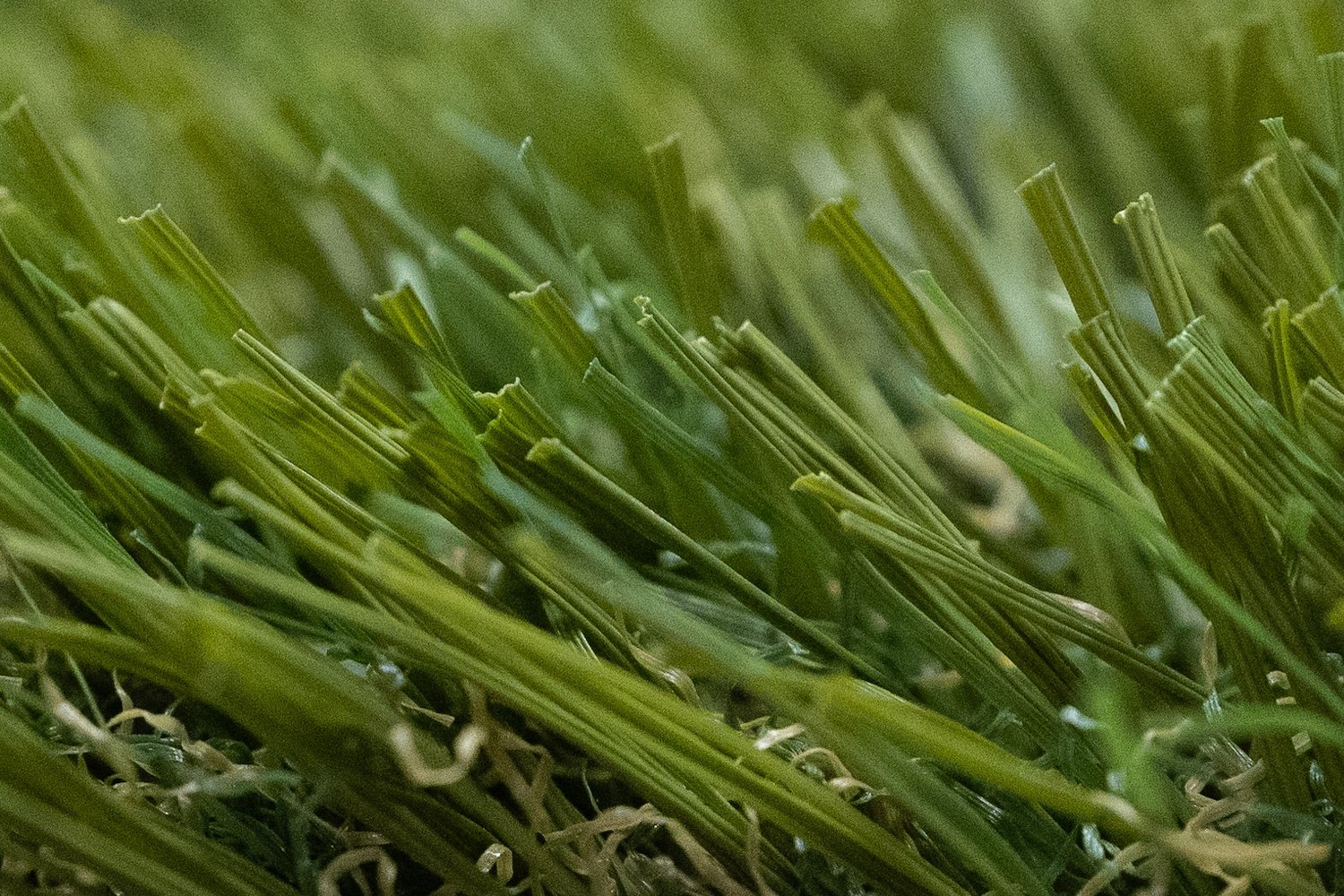New to turf? Learn these 6 terms.
Artificial turf is a solution to year-round lush, green “grass.” It’s also a great way to incorporate a soft touch into a new or existing hardscape application. Artificial turf requires minimal maintenance - no mowing, no watering, no fertilizing. It’s highly durable and won’t become patchy over time. It also doesn’t require watering or the use of pesticides.
If you’re a hardscape professional who’s new to the world of artificial turf, here are six important terms you’ll want to familiarize yourself with.
Stitch Gauge
Stitch Gauge
The stitch gauge refers to the distance between the rows of stitching on a roll of turf.
Pile Height
Pile Height
The pile height refers to the height of the turf blades. Typically, the taller the pile height, the softer underfoot the turf will feel.
Face Weight &
Total Ounce Weight
Face Weight
The face weight is the weight, in ounces, of the grass fibers and stitching, not including the backing.
Total Ounce Weight
The total ounce weight, which is also referred to in ounces, includes the weight of the grass fibers, stitching, and the backing.
Blade Shape
.
Blade Shape
The blade shape is the design or form of the grass. Commonly engineered blade shapes include: U, W or Wave, and C. These shapes tend to stay upright better than blades that are flat and can aid drainage. (Note: Gator X-Turf Premium = C-Blade and Classic = W)
Thatch
Thatch
Thatch is composed of synthetic fibers that replicate the dead grass layer that forms beneath real grass, giving the artificial turf a more realistic, natural appearance. It helps keep artificial turf blades upright and adds cushioning as well.
CONCLUSION
Having an understanding of these six basic terms will help you identify the best turf product for the job.
Stitch Gauge: The stitch gauge refers to the distance between the rows of stitching on a roll of turf.
Pile Height: The pile height refers to the height of the turf blades. Typically, the taller the pile height, the softer underfoot the turf will feel.
Face Weight: The face weight is the weight, in ounces, of the grass fibers and stitching, not including the backing.
Total Ounce Weight: The total ounce weight, which is also referred to in ounces, includes the weight of the grass fibers, stitching, and the backing.
Blade Shape: The blade shape is the design or form of the grass. Commonly engineered blade shapes include: U, W or Wave, and C. These shapes tend to stay upright better than blades that are flat and can aid drainage.
Thatch: Thatch is composed of synthetic fibers that replicate the dead grass layer that forms beneath real grass, giving the artificial turf a more realistic, natural appearance. It helps keep artificial turf blades upright and adds cushioning as well.






